In the last decade, the equipment industry has accelerated its adoption of new technologies that advance both worksite productivity and safe work at height.
Historically, many applications and working environments can be rather challenging for mobile elevating work platforms because these machines are only rated to work on firm, level surfaces. In addition, most job sites aren’t flat.
Today, that’s all changing. The new generation of machines looks and operates very differently, their designs giving more attention to the demands of real-world job sites — and the needs of the users operating these machines.
To solve this common job site challenge, OEMs have had to consider what solutions they can offer that address working in varying terrain while complying with industry standards. With these considerations in mind, technology like variable tilt for slab scissor lifts was developed to adjust a machine’s capability under certain conditions to the ground or surface being worked on. Let’s take a look.
Compliance with Industry Standards
Established standards provide a safety benchmark for the industry. Updates to the ANSI 92 standards in effect in the United States require modern mobile elevating work platforms to be equipped with load sensing and tilt sensing technology to make sure operators remain within the capacity limits of the machine.
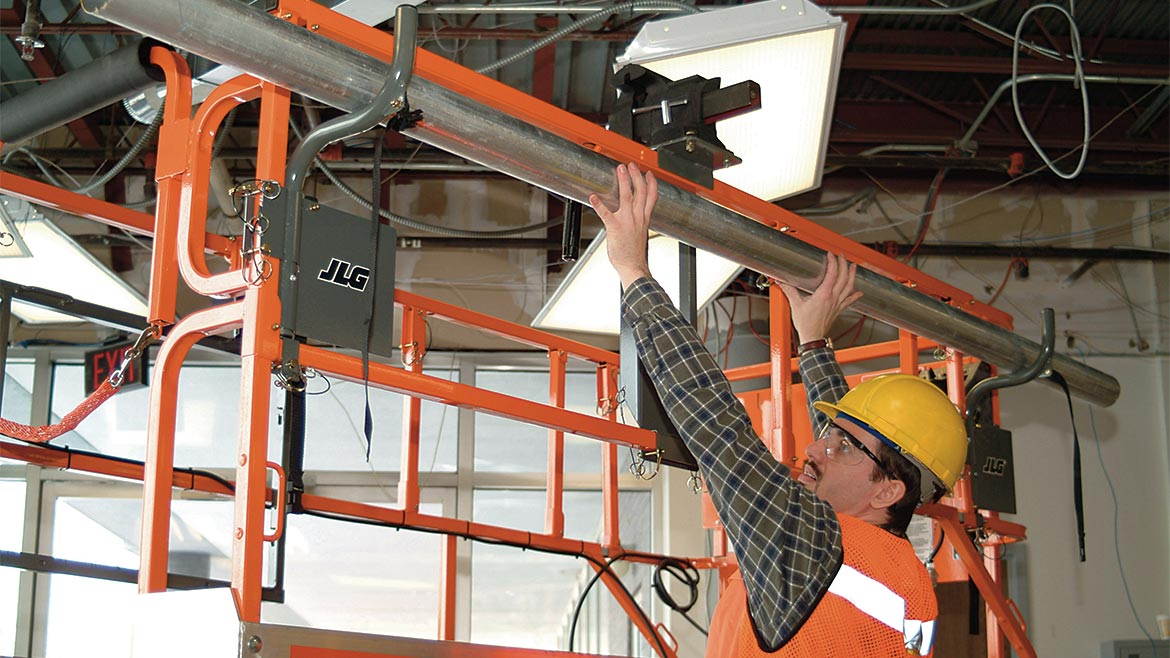
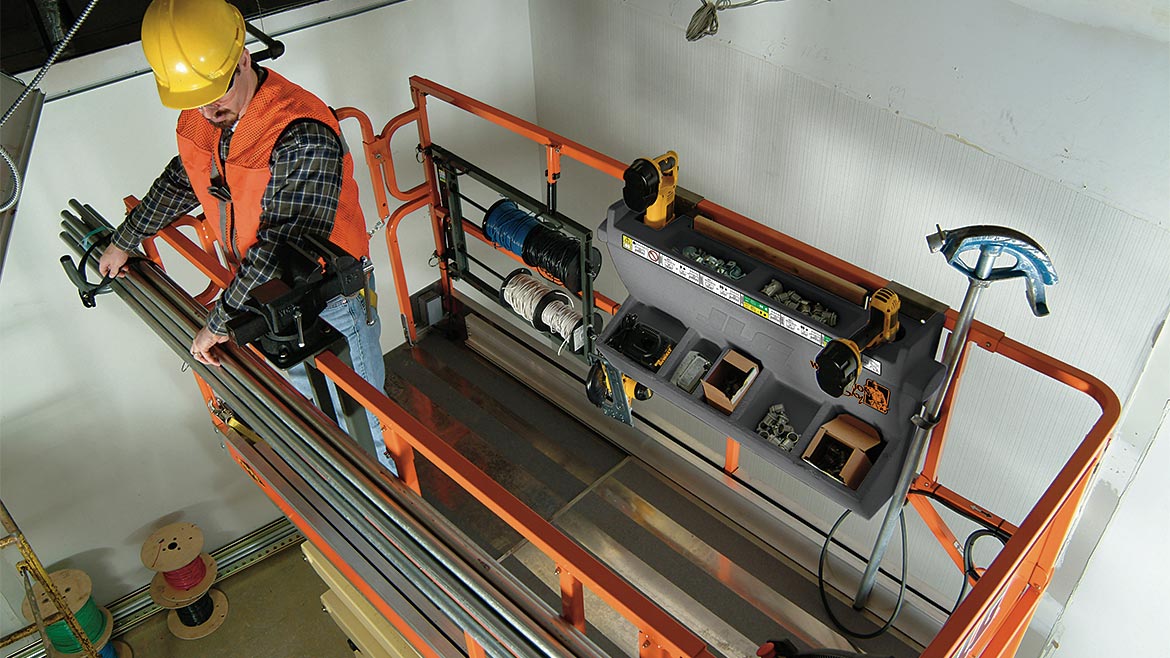
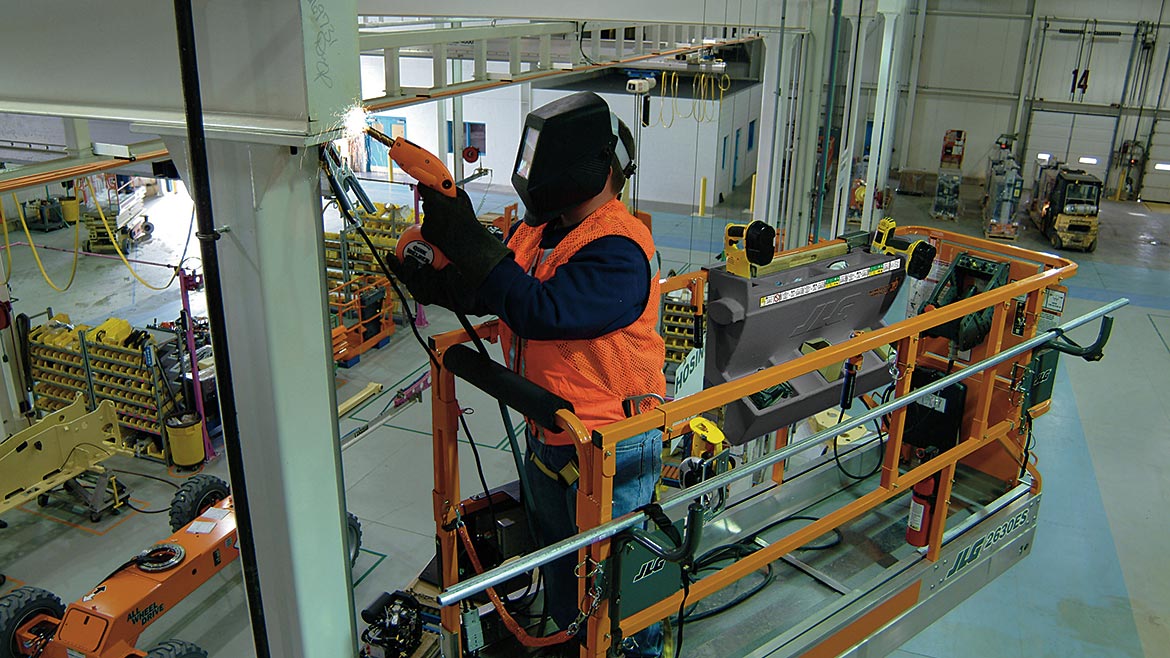
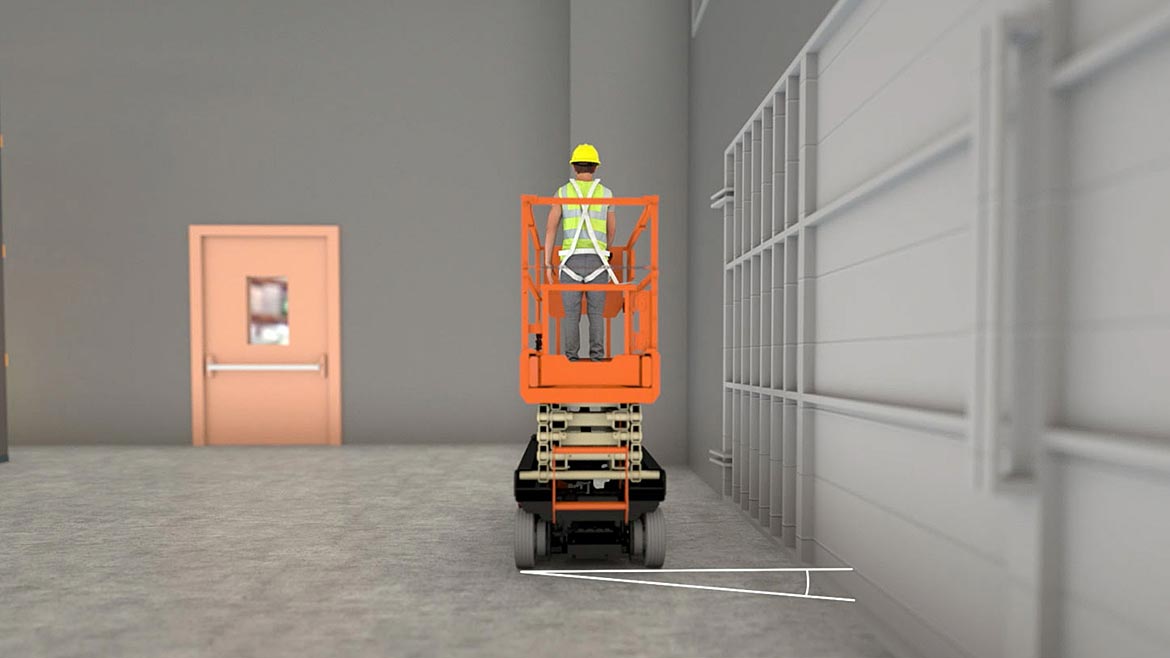
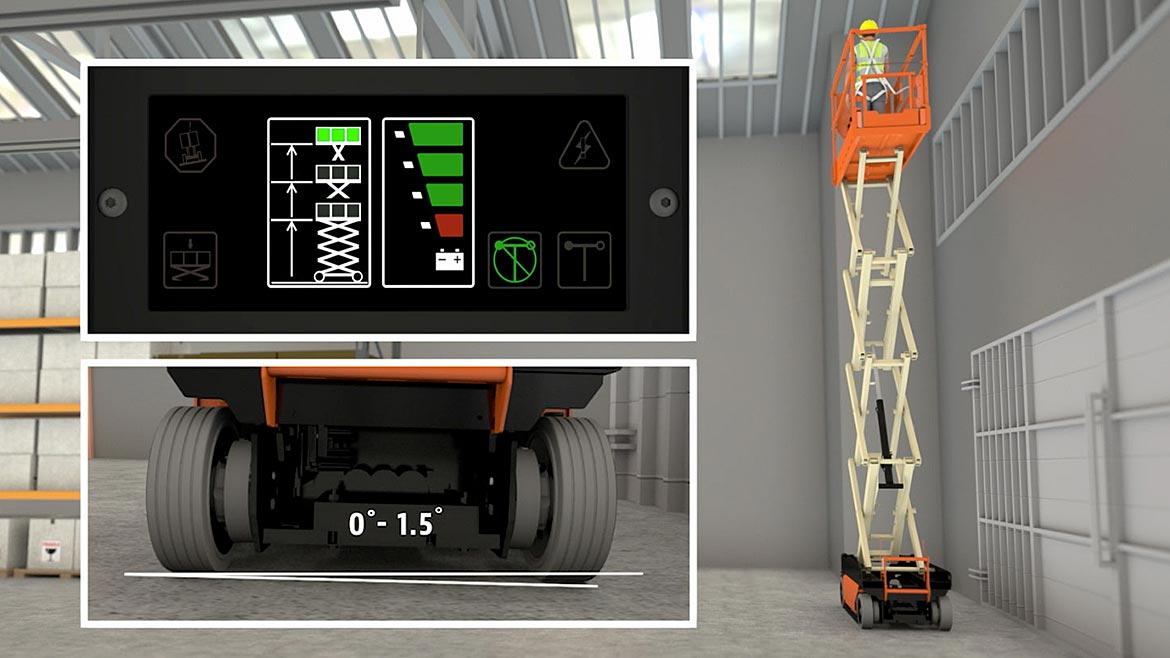
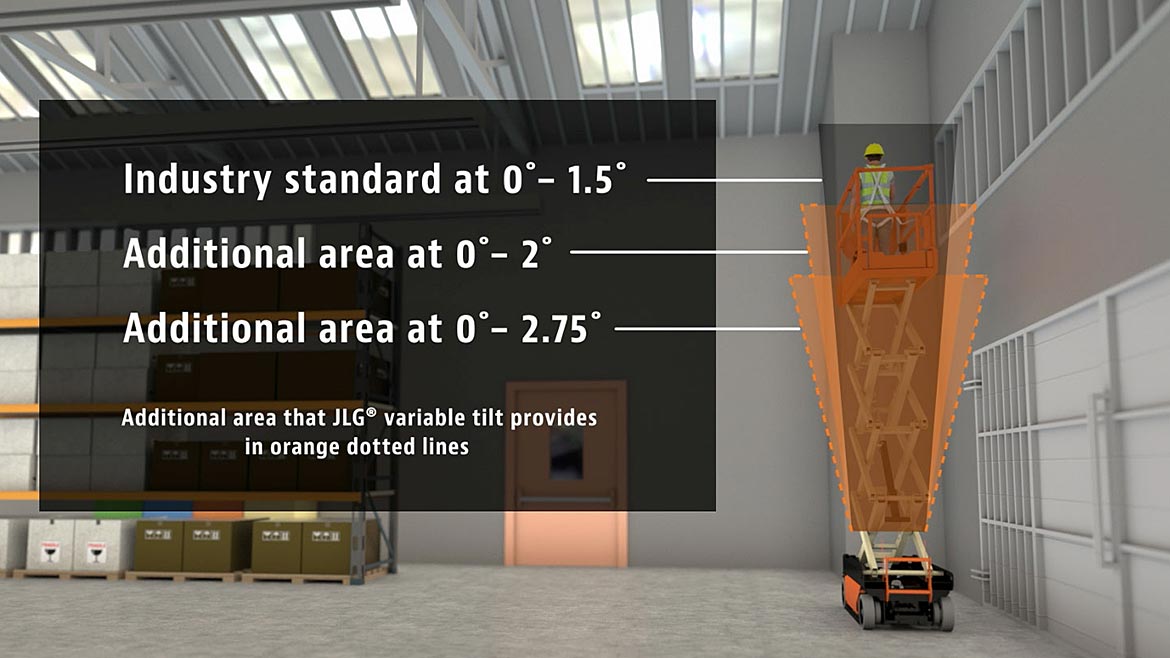
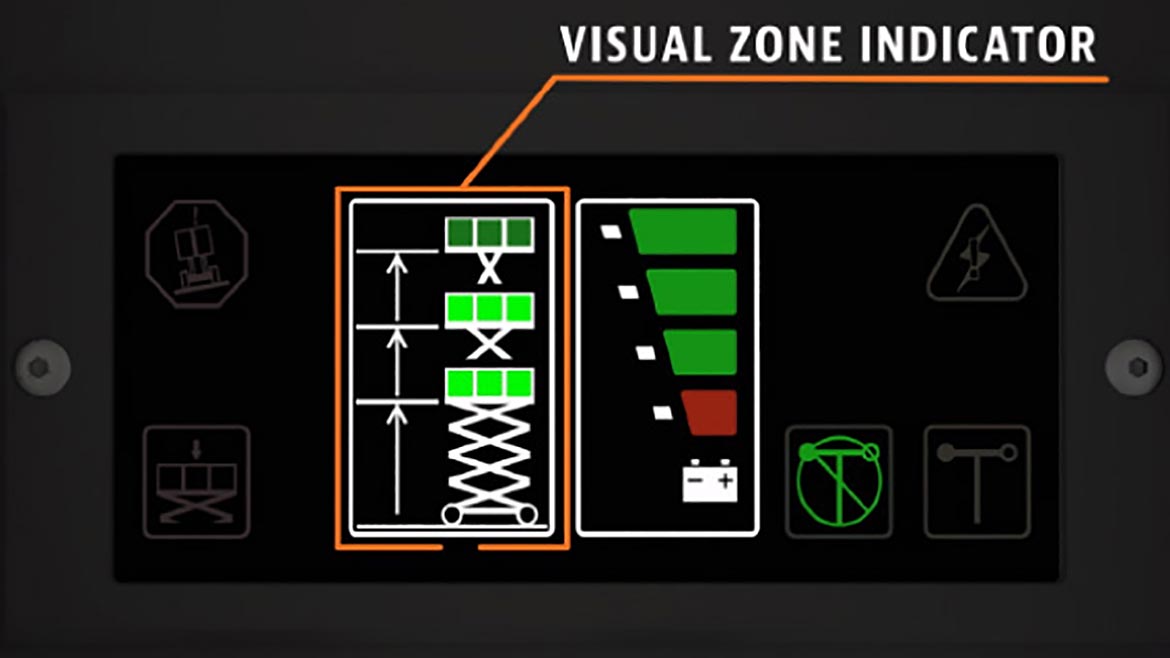
More about Load Sensing
For load sensing, MEWPs must now be equipped with sensors that actively monitor the machine’s platform load and sound an alarm, as well as interrupt normal operations, if overloaded. This means that jobs can no longer be completed if overloaded. If at any time the machine’s total platform load weight exceeds its rated platform load capacity, the machine’s lift and drive functionality cut out.
It also means that operators need to pay close attention to what’s contributing to the MEWP’s load. For example, it’s important to know that the machine’s load capacity is not just calculated by the number and weight of people on the platform. It also includes tools and materials as well as the personal gear of operators and occupants, such as hard hats, tool belts, jackets, boots, and so on.
The machine’s load sensors will also capture any weight added by what the machine may come in contact with at the work area, like a ceiling joist, a rafter, an overhead beam or a window ledge. It will cut out at once should the weight exceed its maximum platform capacity.
More about Tilt Sensing
The machine tilt sensing requirements in the current standards are very similar. Machines that could previously only be operated on level surfaces can now be used on slight slopes; however, a tilt sensor is required. The tilt sensor sounds an alarm and disables boom and drive functions if the incline surpasses the machine’s rated slope tolerance.
Variable Tilt Technology
Recent advancements in machine suspension technology have been developed to address incorporating the requirements of the industry standards while also incorporating solutions that solve real-world job site challenges, like working on uneven terrain.
For example, variable tilt technology for scissor lifts is designed to adjust the machine’s chassis to the ground conditions rather than trying to adjust the ground conditions for the machine.
Why is this important? Because most slab scissor lifts cannot elevate when working on a side slope greater than 1.5 degrees. However, with variable tilt technology, which is designed to maximize a scissor lift’s height based on the slope on which the machine is positioned, scissor lifts can now elevate on side slopes up to 3 degrees. This gives the operator a greater degree of flexibility and keeps machines operating within the approved work envelope.
The first evolution of this technology focused on modifying the machine’s lift height, or work envelope, based on the tilt of the chassis (assuming the machine is fully loaded).
A new, modern version takes this technology a step further—it considers the tilt and actual load of the platform, measured by the load sensing system, to define how high the operator can lift the platform.
Equipped with sensors that monitor both the platform’s weight and the machine’s tilt, today’s variable tilt technology determines the allowable work envelope. The machine then notifies operators on the platform-mounted LCD, before raising the machine, about how high they can elevate.
The display can clearly communicate the machine’s side-to-side tilt, front-to-back tilt, how much weight is on the platform and the current height of the platform, as well as the maximum height the operators can raise the MEWP, by considering those factors. This means that operators can see if they should take a little bit less material with them or if they need to get to a spot that’s a little bit more level on the job site so that they can get the full height.
As an example, operators will now know how much material they can take up with them and if it is more or less than what they already have loaded. They will also know if they need to reposition the machine. This technology removes the guesswork that often results in operators having to descend and try again.
Because variable tilt technology is still relatively new to the market, fleet owners and operators may not fully understand how it works. Here is a common scenario in wall and ceiling applications where this capability helps scissor lift operators work more efficiently at height.
Work in a Data Center
A contractor is installing network cabling at a new data center, which utilizes a network of raised trays to carry data cables above the floor of the massive facility. The contractor’s job is to lay the cables and connect them so that data can flow smoothly through servers, routers and other high-tech equipment.
Utilizing a scissor lift, the contractor maneuvers it next to one of the reinforced concrete walls of the data center and positions it just below and in front of an empty aluminum cable tray.
Knowing that the floor in this part of the building was built with approximately 1 degree of slope, the contractor glances at the machine’s LCD slope indicator. It shows that the platform can be fully extended to its maximum height of just over 25 feet.
Carefully positioning the machine and connecting the fall restraint harness to an anchor point, the contractor elevates the scissor lift until it is alongside the cable tray. Knowing that variable tilt technology allows the machine to work on side-to-side slopes of up to 3 degrees allows the contractor to grab a toolbox and a spool of CAT5 cable from the floor of the work platform and get to work.
Improving Productivity
Another benefit of variable tilt technology is that it provides an uncomplicated user experience. Many people think that the more controls and more limits a machine has would mean more machine issues, such as lift restrictions. However, the opposite is true. Productivity can greatly increase with the gain of a larger working envelope with fewer machine restrictions.
For example, by increasing the work envelope on scissor lifts, there are decreasing machine alarms, which means better machine utilization time—and getting the job done faster.
Looking ahead
Technological advancements like variable tilt continually transform the industry, maximizing productivity and enhancing safety. Variable tilt technology is just one example of innovation that enhances productivity in the real world by allowing users to expand their work envelope.
As demand for new technologies increases, MEWP OEMs will continue to respond with innovative ways for equipment owners and operators to interact with and operate these machines.



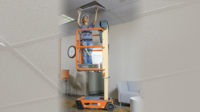


Report Abusive Comment